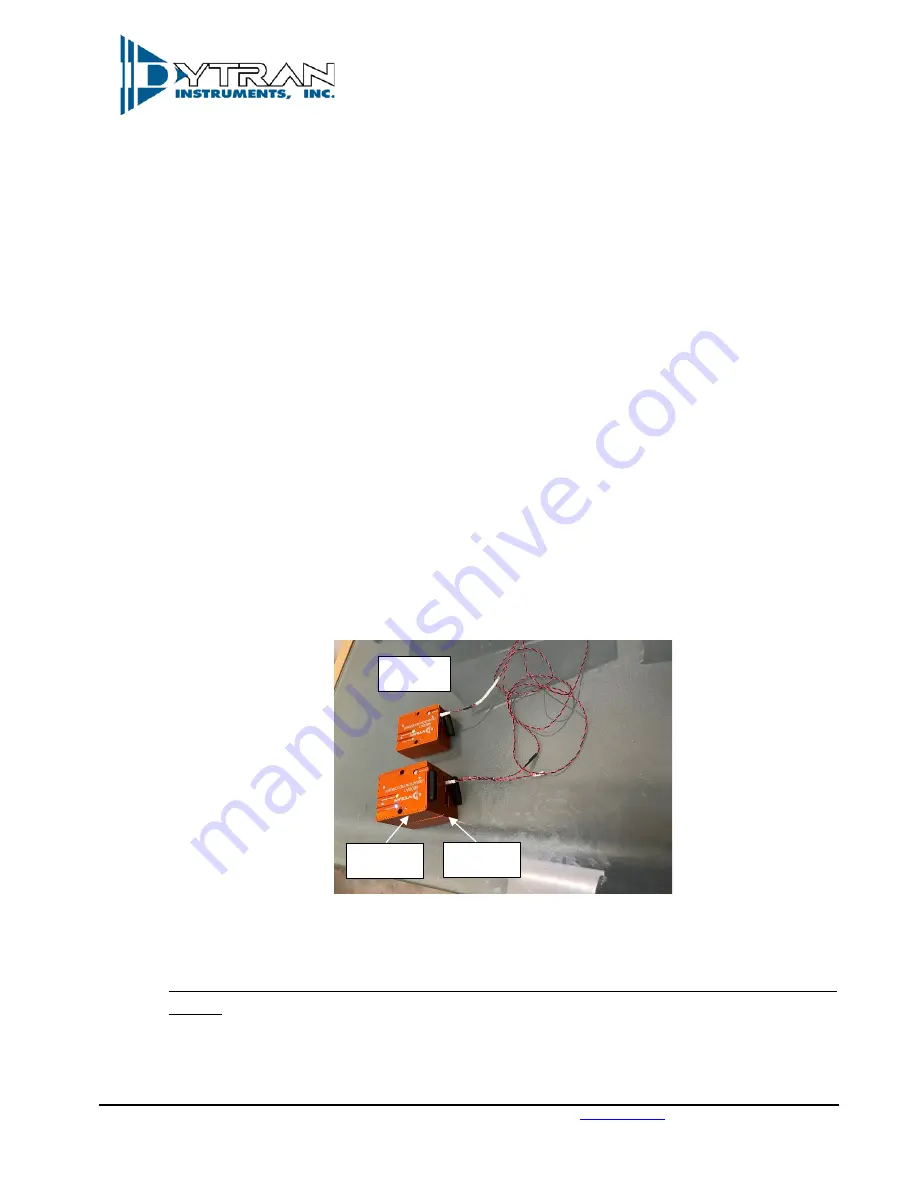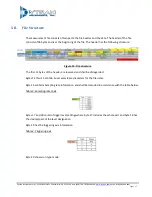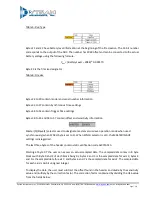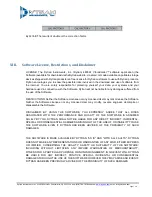
Dytran Instruments, Inc. 21592 Marilla St. Chatsworth, CA 91311 Phone: (818) 700-7818 Website:
email: [email protected]
Page | 16
By pressing the record button on the master unit the acquisition will start on both master and slave.
To stop, press the record button again on the master units and the slave unit will stop by itself within
100 ms.
The 4600A1 also includes an optical synchronization method. This allows synchronization between
multiple 4600A1’s while maintaining the recorders ingress protection. Each 4600A1 has an optical
emitter on the top and an optical receiver on the bottom. When stacking the 4600A1’s the magnets
imbedded in the unit will align the emitter and receiver. With the units in free run mode select the
“Record” button on the lowest unit in the stack all subsequent units will trigger synchronously. When
using the optical method for simultaneous acquisition start, it will work exactly like the
synchronization cable technique described above. However, when using optical synchronization for
the simultaneous sampling, one must remember that the optical simulations sampling works up to
10kHz sampling rate. When there is a need to synchronize 25kHz acquisitions the user must use the
synchronization cable instead.
The synchronous connector and optical input/output are hardware connected. This allows the hybrid
usage of this daisy chaining mechanism. It means the synchronization signal can be supplemented
with either synchronization cables or optical input/output within the same setup. The one important
thing to remember is that when it comes to optical input/output the input is always on the bottom
of the unit and the output is always on the top. These functions are not switchable or
interchangeable.
The Figure above shows daisy chaining of three units using hybrid arrangement of synchronous cable
and optical input/output.
NOTE: It is highly recommended to plug in synchronization cables once the units are turned on and
booted.
Master
Slave#1
Slave#2


















